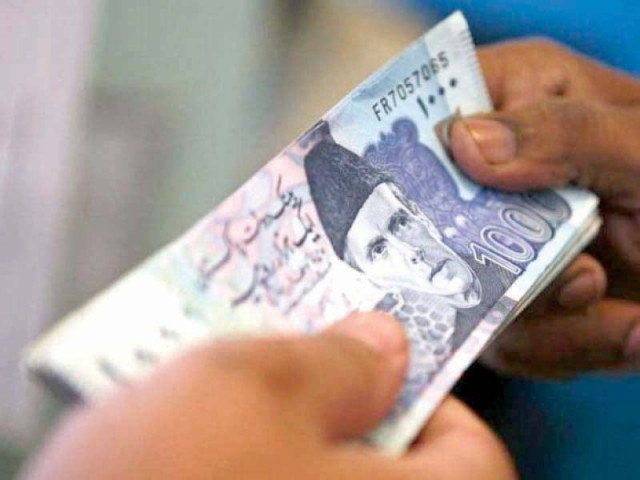Debt servicing may surge to whopping Rs5.2tr
IMF demands Pakistan to raise GST to 18%

The International Monetary Fund (IMF) on Thursday asked Pakistan to increase the general sales tax rate to a minimum of 18% to raise more taxes, as the country’s debt servicing cost was projected to increase to alarmingly Rs5.2 trillion in the current fiscal year
The global lender placed the demand to increase the standard GST rate the day the government shared its revised macroeconomic projections, which showed inflation accelerating to 29% and economic growth rate slowing down to 1.5%.
The higher inflation and lower economic growth would cause higher unemployment and poverty in the country.
A day earlier, the government shared the details of the $30 billion external financing requirements and the projected inflows. But the IMF did not appear confident about the country’s ability to raise roughly $8 billion from capital markets and foreign commercial banks in these challenging times, sources told The Express Tribune.
The sources said that during the second and third day of talks, the government exchanged data about the country’s debt profile, foreign inflows and the macroeconomic projections.
They added that the IMF demanded that the government should consider increasing the GST rate by 1% to 18% to raise additional taxes in the current fiscal year. The GST was considered highly inflationary and 1% increase would push the prices of all goods upwards.
However, a finance ministry functionary added that no decision had yet been taken and the authorities would take the IMF’s demand to the prime minister once the fiscal framework and the gap was agreed upon.
Another government functionary said that the IMF appeared satisfied with the FBR’s revenue projection plan to achieve Rs7.470 trillion annual target. But “the IMF said that the additional tax and non-tax revenue measures would have to be taken to achieve the overall budgetary targets”, he added.
However, there was an issue about the low FBR’s tax-to-GDP ratio, which was now estimated at around 8.4% at the inflated size of the economy. On the projected old size of Rs78 trillion, the ratio was 9.6% of the GDP, which the IMF did not endorse, the sources said. But the IMF was overall satisfied with the FBR’s technical input.
The IMF was told that the total cost of the debt servicing could peak to a whopping Rs5.2 trillion in the current fiscal year 2022-23, the sources said. The government had budgeted Rs3.950 trillion but the revised projections were Rs1.2 trillion or 31% higher than the budget estimates.
The Rs5.2 trillion would be equal to 54% of the budget announced in June last year and massive spending projections could lead to a demand by the IMF for more taxes or cut in other expenses to create some fiscal space, the sources said.
The government had already spent Rs2.57 trillion on debt servicing during July-December period of the current fiscal year. The central bank last month increased the interest rates to 17%, which might not help contain inflation but will surely further bleed the budget.
The sources said that the IMF raised some questions about the inflationary impact of the planned increase in electricity prices to lower the circular debt.
The government’s estimates were that due to further increase in the electricity prices, inflation could jump to 29%, the sources said.
It was not clear whether the government had included the impact of new taxes in the inflation forecast.
The Pakistan Bureau of Statistics on Wednesday reported that inflation hit the 48 years’ highest level of 27.6% in January. The likely acceleration in the index would bring more misery for the people who were facing difficulties in meeting both ends. However, the government had no choice but to comply with the IMF requirements to avoid default.
The IMF was informed that due to floods, tight monetary policy, high inflation, and a less conducive global environment, the economic growth rate might slow down in the range of 1.5% to 2% -- a pace that was even lower than the population growth rate and would cause more unemployment in Pakistan.
The IMF was told that the agriculture sector would contract, the industrial sector might show nominal growth but the services sector was likely to grow around 3%, the sources said.
Compared to old estimates of generating about 1.5 million new jobs, the government had now realised that the additional jobs in the current fiscal year might not be more than half a million.
According to some estimates, about two million new entrants came in the market in search of jobs every year and a low additional employment number suggested that there would be a higher jobless rate in Pakistan.
The sources said that the IMF had also been briefed about the debt profiling and the global lender asked the authorities to review the possibility of contracting domestic loans at fixed rates in longer tenors.
The government claimed that it had made arrangements for the $30 billion gross external loans for this fiscal year but the IMF had some serious questions, according to the sources.
The country's economic viability was at stake, as its gross official foreign exchange reserves plunged to $3.1 billion.
The government still believed it would raise $1.5 billion by floating Eurobonds and had made it part of the external financing plan.
As against the budgeted over $7 billion foreign commercial loans, the Ministry of Finance still saw $6.3 billion materialising in the current fiscal year, a figure that also appeared highly optimistic.
The IMF was of the view that in present circumstances, it would be difficult to raise $8 billion from the capital markets and foreign commercial banks.
There were also questions whether the government could arrange at least $4 billion for making upcoming debt repayments, excluding rollovers.
It hoped to receive a total $11 billion from the multilateral creditors during the current fiscal year but its materialisation depended upon the revival of the IMF programme.
So far, the Asian Development Bank had been helping Pakistan in a major way, but the World Bank was looking towards the IMF.


















COMMENTS
Comments are moderated and generally will be posted if they are on-topic and not abusive.
For more information, please see our Comments FAQ